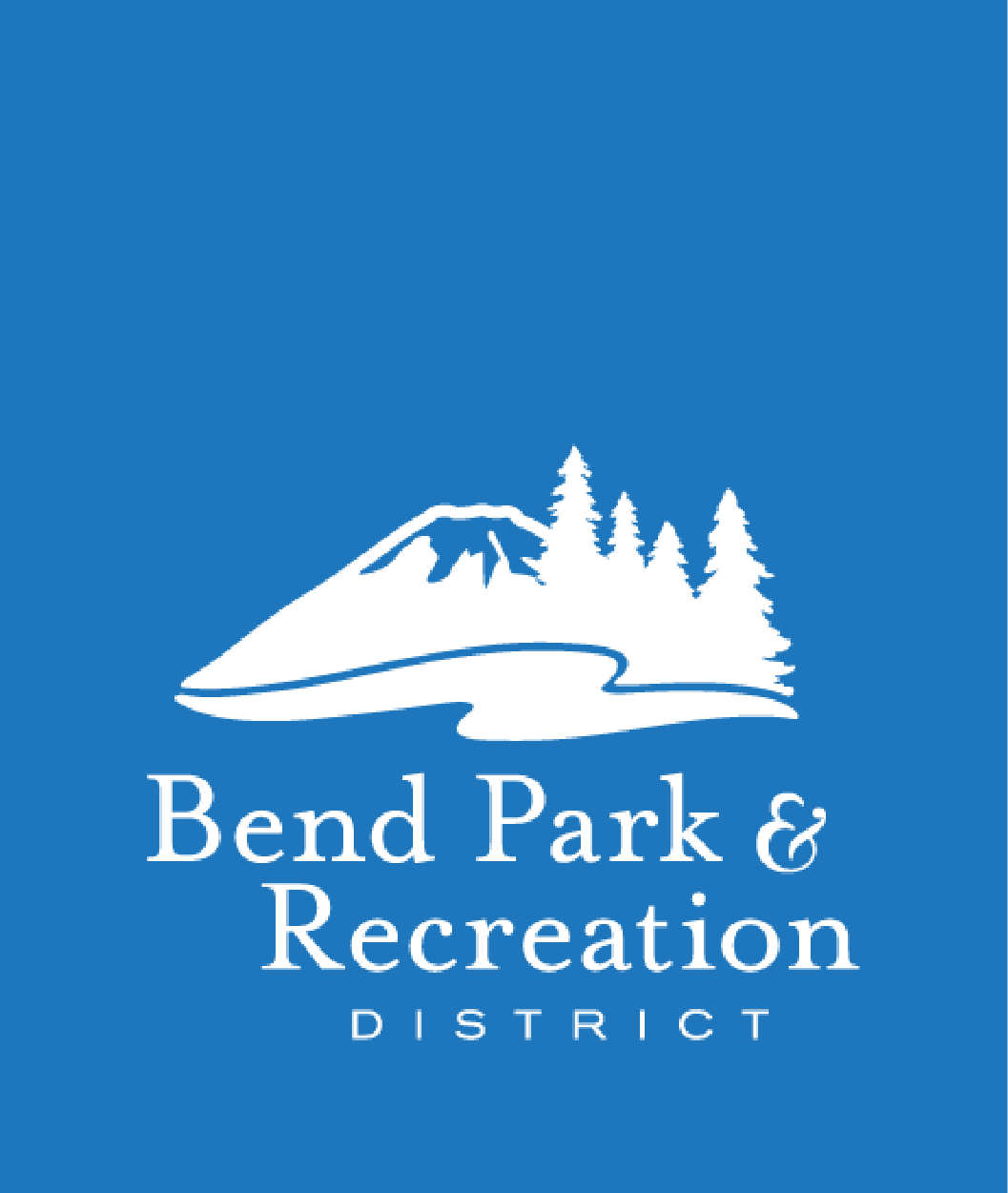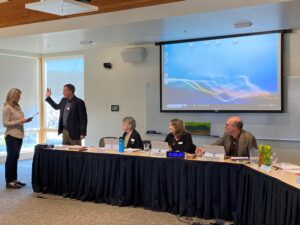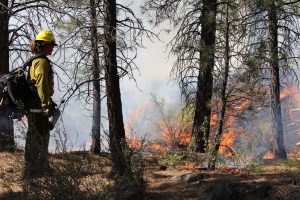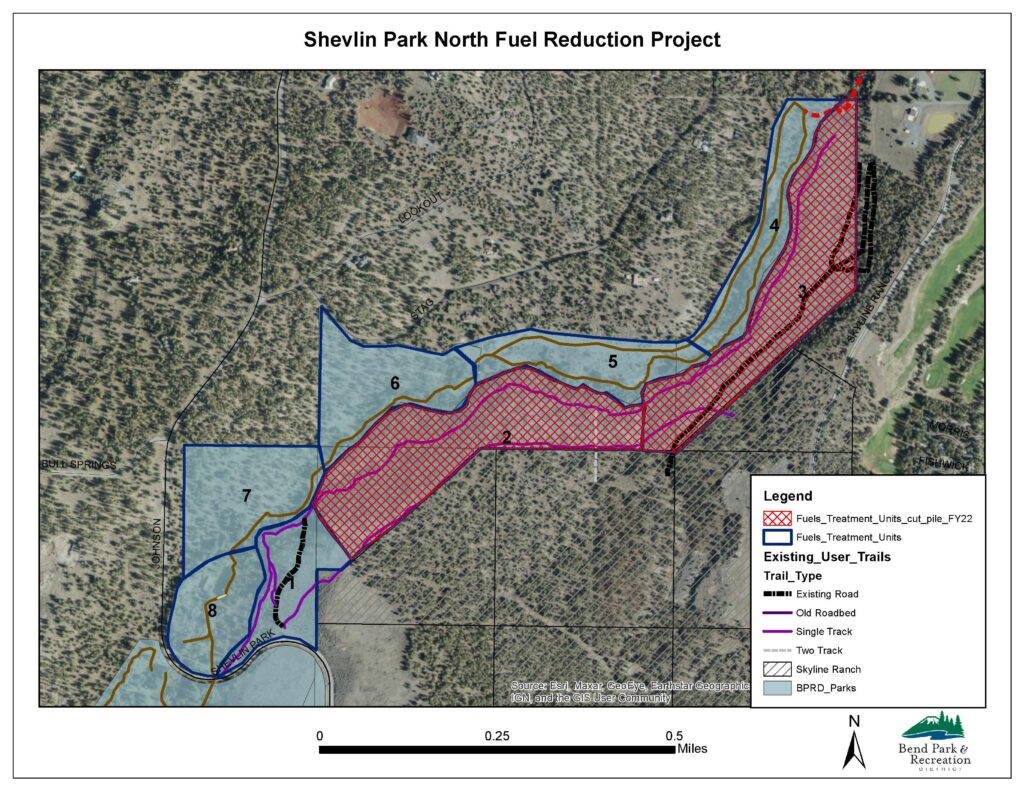 Forest Health & Fire Fuel Reduction
Forest Health & Fire Fuel Reduction
Historically fire played an essential ecological role across the Central Oregon landscape. Prior to European-American settlement, most ponderosa pine forests experienced fire intervals ranging from 5 to 15 years.
These frequent low intensity fires created open-park like stands with mature, fire-resistant ponderosa pines. Understory fuel loads were naturally managed as shade tolerant shrubs and trees were killed by frequent fires.
The District is reintroducing prescribed fire as part of its overall management of natural park areas. Improving vegetation health and managing fire fuels at parks and natural areas, makes the parks and natural areas more resistant and resilient to wildfire.
Goals of the vegetation management plan
- Maintain plant communities that are resistant to a large scale disturbance
- Create and maintain a landscape that is resilient to disturbance
- Create and maintain wildlife habitat
- Maintain natural aesthetics for increasing recreational opportunities
- Preserve the historical and archaeological heritage of parks






